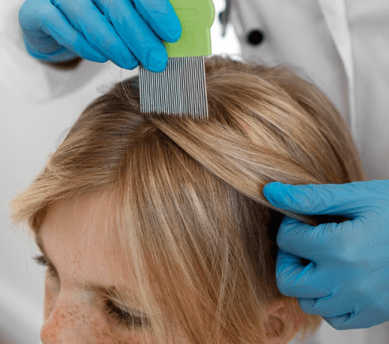South Korea has emerged as one of the world’s top destinations for dental tourism—particularly for cosmetic procedures like porcelain veneers. Known for its advanced technology, highly skilled dentists, and cost-effective treatment, Korea offers medical tourists the unique opportunity to combine a dental makeover with a cultural vacation.
But when exactly is the best time to travel for porcelain veneers in Korea? In this guide, we’ll help you plan the perfect dental trip based on season, treatment timelines, and clinic availability.
🦷 Why Timing Matters for Veneers
Porcelain veneers typically require 5 to 7 days to complete, from consultation to final bonding. Planning your trip around the right time of year helps ensure:
- Better appointment availability
- Comfortable weather for sightseeing
- Lower travel and accommodation costs
- A more relaxed, enjoyable recovery process
📅 Best Seasons to Visit Korea for Dental Treatments
🍁 Spring (April – June): Best Overall Season
- Why it’s ideal: Mild temperatures, low humidity, and beautiful cherry blossoms make this season the most popular for both travel and medical procedures.
- Pros:
- Comfortable weather for recovery and sightseeing
- Great lighting for natural post-treatment smile photos
- Clinics operate at full capacity
- Tip: Book early—especially in April—due to high tourist demand during cherry blossom season.
🍂 Autumn (September – November): Highly Recommended
- Why it’s ideal: Clear skies, crisp air, and stunning fall foliage provide the perfect backdrop for your dental vacation.
- Pros:
- Fewer crowds than spring
- Cooler temperatures for post-procedure comfort
- High clinic availability (especially in October)
- Tip: Early November is ideal for a quieter experience with lower hotel rates.
☀️ Summer (July – August): Okay with Caution
- Why it’s less ideal: Korea’s summer can be hot, humid, and crowded due to school vacations.
- Pros:
- Easy to schedule appointments due to lower medical tourism traffic
- Some clinics offer off-season discounts
- Cons:
- Uncomfortable humidity for recovery
- Frequent rains and possible typhoons in July
- Tip: Choose clinics with private recovery lounges and climate control.
❄️ Winter (December – February): Least Popular but Possible
- Why it’s least ideal: Cold, dry air can affect recovery, and heavy snow may disrupt travel.
- Pros:
- Lowest prices for flights and hotels
- Great if you prefer quiet clinics and winter festivals
- Cons:
- Dry conditions may worsen temporary sensitivity
- Slippery sidewalks and sub-zero temperatures
- Tip: Bring lip balm and hydration-friendly skincare, and stay near your clinic.
🧳 How to Schedule Your Dental Trip Smartly
1. Book Your Clinic Appointment First
Before booking flights, contact your preferred clinic to:
- Confirm availability for your desired dates
- Share recent dental records or photos
- Request a treatment estimate and timeline
Most top clinics can accommodate 6–10 veneers in one week, but advanced booking ensures better planning.
2. Plan for At Least 7 Days in Korea
A typical porcelain veneer schedule:
| Day | Activity |
|---|---|
| Day 1 | Initial consultation + digital scan |
| Day 2 | Tooth prep + temporary veneers |
| Days 3–5 | Veneer fabrication (lab work) |
| Day 6 | Final veneer bonding |
| Day 7 | Optional check-up or sightseeing |
Add 1–2 buffer days for rest or minor adjustments.
3. Avoid National Holidays
Korean clinics often close for:
- Lunar New Year (January–February)
- Chuseok (Korean Thanksgiving, September–October)
During these periods, clinics may close for 3–5 days.
4. Coordinate with Local Festivals
While festivals like cherry blossom season or autumn foliage can enhance your travel experience, they may also increase hotel prices and clinic traffic. If you’re traveling during high-demand seasons, secure appointments and accommodations early.
✨ Bonus: Combine Veneers with Korean Tourism
Korea offers plenty to explore during your veneer treatment break:
- In Seoul: Visit Gyeongbokgung Palace, shop in Myeongdong, and stroll through Bukchon Hanok Village.
- In Busan: Enjoy the beach at Haeundae, explore Gamcheon Culture Village, and indulge in fresh seafood.
- In Jeju: Hike volcanic landscapes and enjoy peaceful island vibes between dental visits.
Pro tip: Schedule lighter sightseeing on treatment days and save bigger excursions for post-procedure days when your mouth has adjusted.
🛡️ Post-Treatment Considerations by Season
| Season | What to Watch | Recovery Tip |
|---|---|---|
| Spring | Pollen allergies | Take antihistamines if prone to seasonal allergies |
| Summer | Heat/humidity | Stay hydrated and rest in air-conditioned spaces |
| Autumn | Dry air | Use lip balm and avoid overly spicy food |
| Winter | Cold/sensitivity | Avoid hot beverages until veneers are bonded |
Final Thoughts: When Is the Best Time?
The best time to travel to Korea for porcelain veneers is during spring (April–June) or autumn (September–November)—when the weather is mild, clinic access is reliable, and travel conditions are ideal for recovery.
If you’re flexible and want lower costs, summer and winter can still work with extra planning and care.




